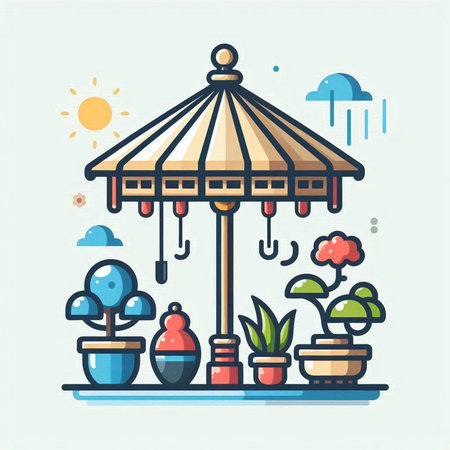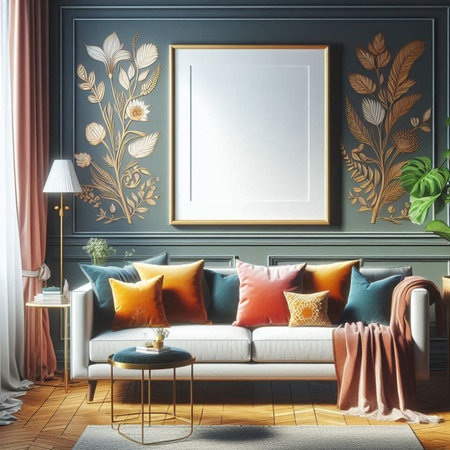1. Introduction to Colour and Lighting in Urban Indian Homes
In the vibrant landscape of urban India, colour and lighting design play a pivotal role in defining the essence of home interiors. For generations, Indian homes have celebrated an expressive palette—rich reds, deep blues, earthy ochres, and sparkling metallics—all echoing the nation’s diverse heritage and cultural symbolism. At the same time, modern urban lifestyles are ushering in new preferences: subtle neutrals, streamlined designs, and innovative lighting solutions that reflect aspirations for contemporary comfort and global sensibilities. Today’s urban Indian home stands at an exciting crossroads where tradition meets modernity. Thoughtful choices in colour and lighting not only shape how spaces look but also influence mood, well-being, and a sense of belonging. Whether drawing inspiration from age-old customs or embracing cutting-edge trends, homeowners are finding creative ways to craft living environments that honour their roots while adapting to present-day needs. As we explore the contrasts and harmonies between traditional and modern approaches, it becomes clear that colour and lighting are far more than decorative elements—they are the heartbeats of urban Indian homes, reflecting both legacy and dreams for the future.
2. Traditional Indian Colour Palettes and Lighting Styles
In the heart of urban Indian homes, traditional colour palettes and lighting styles continue to create a warm and inviting atmosphere. These time-honoured design elements are deeply rooted in India’s rich cultural heritage, reflecting both family values and centuries-old customs. Let us explore some key features that define the traditional approach:
Time-Honoured Hues and Bold Patterns
Traditional Indian interiors are renowned for their vibrant use of colours. Earthy reds, rich yellows, deep blues, and lush greens dominate the palette, often accentuated by golds and silvers for a regal touch. These hues are not chosen at random; each colour holds symbolic meaning, such as red for prosperity or yellow for happiness. Bold patterns—like paisleys, florals, and intricate geometric motifs—are commonly seen on walls, textiles, and even floors, adding character to every space.
Popular Traditional Colour Combinations
| Colour Combination | Cultural Significance |
|---|---|
| Red & Gold | Celebration, prosperity, auspiciousness |
| Yellow & Green | Harmony, fertility, new beginnings |
| Blue & White | Peace, spirituality, calmness |
| Maroon & Orange | Warmth, festivity, tradition |
Natural Materials and Textures
The use of natural materials is another hallmark of traditional Indian design. Wood—especially teak or rosewood—is widely used for furniture and ceiling beams. Terracotta tiles and stone flooring keep homes cool during hot summers. Fabrics like cotton and silk drape windows and beds in vibrant patterns, while brass and copper accents add a touch of elegance.
Cultural Significance of Materials Used
| Material | Usage in Home | Cultural Value |
|---|---|---|
| Wood (Teak/Rosewood) | Furniture, ceilings, doors | Strength, longevity, connection with nature |
| Terracotta/Stone | Flooring, decorative pieces | Simplicity, earthiness, cooling effect |
| Cotton/Silk Textiles | Curtains, bedding, upholstery | Comfort, luxury (silk), everyday utility (cotton) |
| Brass/Copper Accents | Lamps, utensils, decor items | Purity (copper), prosperity (brass) |
The Role of Oil Lamps and Lanterns in Lighting Design
No discussion of traditional Indian lighting would be complete without mentioning oil lamps (diyas) and lanterns. These sources of soft illumination are integral to religious rituals and family gatherings alike. Diyas made from clay or brass are often placed at entrances or altars during festivals like Diwali to symbolise the victory of light over darkness. Lanterns—crafted from metal or coloured glass—bring a magical glow to courtyards and living rooms.
How Traditional Lighting Reflects Family Values
The act of lighting a diya is more than a daily routine; it is an expression of hope and togetherness. In many Indian families, children join elders in lighting lamps at dusk—a cherished ritual that strengthens familial bonds and instils respect for tradition.

3. Modern Colour and Lighting Trends in Indian Homes
Urban Indian homes today are embracing a wave of modern colour palettes and lighting innovations that reflect evolving lifestyles and aspirations. Neutral tones like off-white, beige, and soft greys have become increasingly popular, creating a calm and spacious feel that resonates with the fast-paced city life. These colours serve as a versatile canvas, allowing homeowners to experiment with bold accent walls or vibrant décor pieces inspired by Indian culture.
Minimalism is another key trend shaping contemporary interior design. Families are opting for clutter-free spaces, streamlined furniture, and simple yet elegant lighting fixtures. The focus is on functionality without compromising on style—think modular sofas, open shelving, and concealed storage solutions that maximise space in compact city apartments.
Technological advancements play a significant role in redefining lighting choices. LED technology has become the norm, offering energy efficiency, longevity, and versatility. Modern Indian households appreciate the cost savings and sustainability benefits of LED bulbs and strip lights. In addition, the wide range of colour temperatures available allows residents to customise the mood of each room—from warm golden hues for living areas to cool white for workspaces.
Smart lighting solutions are gaining momentum among tech-savvy urban families. Automated systems controlled by smartphones or voice assistants make it easy to adjust brightness levels, set schedules, or even change colours to suit different occasions—be it festive gatherings or quiet evenings at home. This integration of technology not only adds convenience but also enhances security and energy management in busy city environments.
While modern trends prioritise simplicity and efficiency, they do not overlook cultural nuances. Many families blend these new elements with traditional motifs—like ethnic lamp shades or handcrafted wall art—to create a uniquely Indian ambience that feels both fresh and familiar. This harmonious mix highlights the adaptability of Indian homeowners as they redefine their living spaces to match contemporary needs while staying connected to their roots.
4. Cultural Influences on Design Choices
India’s rich cultural heritage deeply impacts colour and lighting choices in urban homes, creating a unique blend of modern trends and traditional values. From the influence of regional diversity to the importance of festivals, Vastu Shastra, and family customs, each factor plays a vital role in shaping the ambience of Indian living spaces.
Regional Diversity in Urban Homes
Across India, urban homes reflect the vibrant colours and lighting traditions specific to their regions. For example, North Indian homes often showcase bold hues like maroon and gold, while South Indian interiors favour earthy shades such as ochre and green. This diversity is visible in both traditional and contemporary settings, as families strive to maintain their cultural identity even when embracing modern aesthetics.
| Region | Traditional Colour Palettes | Lighting Preferences |
|---|---|---|
| North India | Red, Maroon, Gold | Warm ambient lighting, lanterns |
| South India | Green, Ochre, Ivory | Naturally lit spaces, brass lamps |
| West India | Blue, Yellow, Orange | Decorative pendant lights, diyas during festivals |
| East India | Purple, White, Pink | Soft diffused lighting, fairy lights during celebrations |
The Role of Festivals in Colour and Lighting Design
Festivals are central to Indian life and significantly influence interior design. During Diwali or Navratri, urban homes come alive with vibrant rangolis at the entrance and elaborate lighting—ranging from traditional diyas (oil lamps) to modern LED strips. These temporary transformations often inspire permanent changes in colour schemes or lighting arrangements as families seek to recreate festive joy year-round.
Vastu Shastra: Harmonising Energy Through Design
The ancient science of Vastu Shastra continues to guide many urban Indian households in selecting suitable colours and lighting. For example, yellow is believed to attract positivity when used in living rooms; blue brings calmness to bedrooms. Lighting placement is also influenced by Vastu principles—ensuring that natural light fills key areas while artificial lighting complements the home’s energy flow.
Vastu-Recommended Colours for Different Spaces:
| Room/Area | Suggested Colours (Vastu) |
|---|---|
| Living Room | Cream, Yellow, Light Green |
| Bedroom (Master) | Light Blue, Pink, Grey |
| Pooja Room (Prayer Space) | White, Light Yellow |
| Kitchen | Orange, Red (with moderation) |
The Importance of Family Customs and Traditions
Family customs—from inherited heirlooms to age-old rituals—often dictate design preferences in urban Indian homes. Many families display ancestral artefacts or follow rituals that require dedicated spaces with special lighting or colour backgrounds. Even as modern tastes emerge among younger generations, these customs ensure that tradition remains a constant presence within contemporary interiors.
Towards a Balanced Urban Aesthetic
The fusion of tradition and modernity in colour and lighting design reflects not only personal taste but also respect for one’s roots. By understanding how regional identity, festivals, Vastu Shastra principles, and family customs intertwine in urban Indian homes, homeowners can create spaces that are both stylishly modern and culturally resonant.
5. Blending Traditional and Modern Design Approaches
Striking a balance between traditional Indian aesthetics and modern design elements in urban homes is not just about visual appeal—it’s about honouring heritage while embracing contemporary comforts. Whether you live in Mumbai, Delhi, or Bengaluru, there are practical strategies to seamlessly blend legacy colour schemes and décor with today’s lighting technologies, all while considering budget, space constraints, and your personal style.
Respecting Heritage Colour Palettes
Begin by identifying signature colours from your family or region—think earthy terracottas, deep indigos, or festive marigold yellows. These hues can be retained on feature walls, doorways, or even as accent furnishings. To add a modern twist, pair these with muted neutrals like dove grey or soft beige on other walls, helping traditional colours pop without overwhelming the senses.
Smart Lighting Choices for Every Budget
Modern lighting does not mean expensive chandeliers or imported fixtures. In fact, LED strip lights or adjustable spotlights are affordable and energy-efficient options that work well in compact urban flats. Layer ambient lighting (such as ceiling-mounted LEDs) with focused task lights (like reading lamps) in traditional corners—your puja space, reading nook, or kitchen alcove—for both function and charm.
Maximising Space with Thoughtful Placement
Urban homes often face space limitations. Use mirrors with intricate Indian frames to reflect both colour and light, making rooms feel larger and more inviting. Place floor lamps beside antique wooden furniture, or use pendant lights above jharokha-inspired window seats to highlight unique architectural features while saving floor space.
Personal Style: The Final Touch
Your home should tell your story. Mix inherited brass lamps with modern metallic finishes, or layer handwoven dhurries beneath sleek coffee tables. When it comes to art, juxtapose Madhubani paintings alongside abstract prints—let each piece complement the whole. Remember, blending styles isn’t about perfection; it’s about creating harmony where every element has meaning for you.
By weaving together old and new through careful colour selection and innovative lighting solutions, you can create an urban Indian home that is both rooted in tradition and alive with modern vibrancy—all within your means and true to your identity.
6. Case Studies and Real-Life Urban Indian Home Examples
Indias urban homes are a testament to the creativity and adaptability of its people, especially when it comes to blending modern and traditional colour and lighting design. Let’s explore some inspiring case studies that showcase how homeowners across cities like Mumbai, Bengaluru, and Delhi are striking the perfect harmony between contemporary aesthetics and cherished Indian traditions.
Mumbai Apartment: A Fusion of Minimalism and Heritage
In the heart of Mumbai, the Sharma family reimagined their 3BHK flat by pairing sleek white walls with vibrant Rajasthani hand-painted tiles as accent pieces. Modern recessed LED lighting highlights antique brass artefacts inherited from their grandparents. Their key lesson? “Balance is everything—let modern elements highlight, not overshadow, our heritage,” says Mrs Sharma.
Bengaluru Villa: Natural Light Meets Traditional Palettes
The Patils’ villa in Bengaluru is bathed in sunlight thanks to large windows and skylights, a nod to contemporary design principles. Yet, each room bursts with earthy reds, turmeric yellows, and indigo blues inspired by South Indian temples. Decorative pendant lights made from local terracotta bring warmth and authenticity. The Patils advise: “Use natural light to enhance bold colours without making spaces feel cramped.”
Delhi Duplex: Smart Lighting with a Cultural Touch
In Delhi, the Mehra family integrated smart home lighting systems that can shift from bright white for work hours to soft amber for festive evenings. They paired these with traditional jharokha mirrors and Madhubani artwork on feature walls. Their approach shows that technology can coexist beautifully with cultural motifs when chosen thoughtfully.
Creative Solutions by Indian Homeowners
- Mixing Old and New: Many homeowners repurpose vintage lamps or lanterns with modern LED bulbs, preserving nostalgia while saving energy.
- Layered Lighting: Combining ambient ceiling lights with floor lamps or wall sconces creates depth and allows flexibility for different moods or occasions—be it Diwali celebrations or quiet evenings.
- Custom Colour Stories: Families often pick a central traditional colour (like maroon or emerald) and pair it with neutral modern tones for a unique signature look.
Lessons Learned
From these real-life examples, it’s clear that thoughtful integration of modern innovations with traditional sensibilities results in homes that are both functional and full of character. Indian homeowners remind us that embracing both worlds requires openness to experimentation, respect for heritage, and an eye for practical solutions tailored to everyday urban life.
7. Conclusion and Tips for Indian Homeowners
In the evolving landscape of urban Indian homes, finding harmony between modern and traditional colour and lighting design is both a challenge and an opportunity. By embracing contemporary trends while respecting cultural heritage, homeowners can create spaces that are vibrant, functional, and deeply personal. Here are some key takeaways and practical tips to guide your choices:
Balance Tradition with Modernity
Blend classic Indian hues like deep reds, turmeric yellows, or indigo blues with modern neutrals such as greys, whites, or muted pastels. This combination ensures your home feels rooted in tradition but also fresh and relevant to today’s urban lifestyle.
Choose Lighting Mindfully
Consider layering light sources. Pair statement chandeliers or pendant lights with subtle recessed lighting or traditional diyas (oil lamps) for festive occasions. Smart lighting solutions can help set the mood while highlighting architectural features or treasured art pieces.
Respect Vastu Principles
If you value Vastu Shastra, choose colours and lighting placements that align with its guidelines. For example, use warm tones in the living room for welcoming energy and soft lighting in bedrooms to encourage restful sleep.
Celebrate Local Artisanship
Incorporate handcrafted elements such as jaali work lampshades, block-printed fabrics, or brass fixtures. These not only support local artisans but also add a unique story to your interiors.
Personalise Your Space
Ultimately, your home should reflect your family’s values, tastes, and memories. Don’t hesitate to experiment—mix heirloom pieces with new finds, or introduce playful pops of colour through cushions, rugs, or artwork.
By thoughtfully blending the best of both worlds—modern convenience and traditional aesthetics—you can craft an urban home that feels timeless yet contemporary, functional yet soulful. Let your creativity shine while honouring the rich tapestry of Indian culture.

